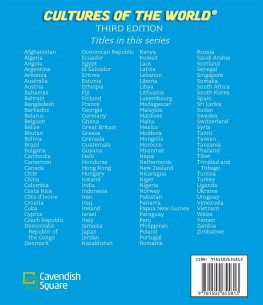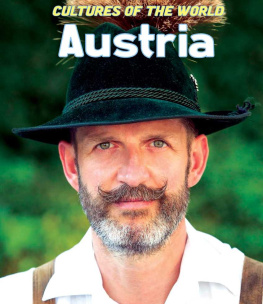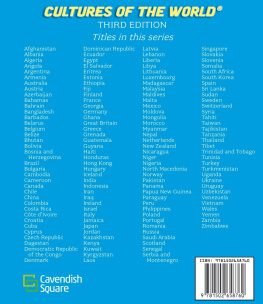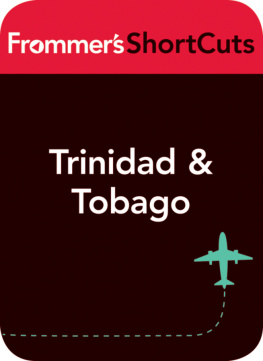
Published in 2020 by Cavendish Square Publishing, LLC
243 5th Avenue, Suite 136, New York, NY 10016
Copyright 2020 by Cavendish Square Publishing, LLC
Third Edition
No part of this publication may be reproduced, stored in a retrieval system, or transmitted in any form or by any meanselectronic, mechanical, photocopying, recording, or otherwisewithout the prior permission of the copyright owner. Request for permission should be addressed to Permissions, Cavendish Square Publishing, 243 5th Avenue, Suite 136, New York, NY 10016. Tel (877) 980-4450; fax (877) 980-4454.
Website: cavendishsq.com
This publication represents the opinions and views of the author based on his or her personal experience, knowledge, and research. The information in this book serves as a general guide only. The author and publisher have used their best efforts in preparing this book and disclaim liability rising directly or indirectly from the use and application of this book.
All websites were available and accurate when this book was sent to press.
Library of Congress Cataloging-in-Publication Data
Names: Yong, Jui Lin, author. | Oswald, Vanessa, author. | Sheehan, Sean,
1951- author.
Title: Trinidad and Tobago / Yong Jui Lin, Vanessa Oswald, and Sean
Sheehan.
Description: Third edition. | New York, NY: Cavendish Square Publishing,
2020. | Series: Cultures of the world | Includes bibliographical
references and index.
Identifiers: LCCN 2019059491 (print) | LCCN 2019059492 (ebook) | ISBN
9781502655813 (library binding) | ISBN 9781502655820 (ebook)
Subjects: LCSH: Trinidad and Tobago--Juvenile literature.
Classification: LCC F2119 .S54 2020 (print) | LCC F2119 (ebook) | DDC
972.983--dc23
LC record available at https://lccn.loc.gov/2019059491
LC ebook record available at https://lccn.loc.gov/2019059492
Editor: Kristen Susienka
Copy Editor: Nathan Heidelberger
Designer: Jessica Nevins
The photographs in this book are used by permission and through the courtesy of: Cover Stickney Design/Moment Open/Getty Images; p. Tom Eppenberger Jr./Wikimedia Commons/File: Belizean Cassava Pone.jpg/CC-BY-SA-2.0.
Some of the images in this book illustrate individuals who are models. The depictions do not imply actual situations or events.
CPSIA compliance information: Batch #CS20CSQ: For further information contact Cavendish Square Publishing LLC, New York, New York, at 1-877-980-4450.
Printed in the United States of America



D IVERSITY IS A BIG PART OF THE NATION OF TRINIDAD AND Tobago. Its evident in the people who live there, the wildlife, the delectable cuisine, the different styles of music, and so much more. Made up of two main islandsone called Trinidad and the other called Tobagoand several smaller ones, this one country is located at the southernmost tip of the Caribbean islands, lying only a few miles off the coast of South America near the country of Venezuela. Trinidad and Tobago has been attracting settlers for well over 2,000 years, and this has led to a lively and varied population. Residents and visitors alike enjoy the sights in cities such as Port of Spain, San Fernando, and Scarborough, as well as the beautiful beaches, lush rain forests, and rolling hills of the countryside.
FLAVOR OF THE ISLANDS
People from all different parts of the worldAfrica, Asia, Europe, and morehave found their way to this country and combined their own traditions with those of the islands, forming a unique community. Several languages are spoken in Trinidad and Tobago; however, Trini, or Trinidadian Creole, remains the language most spoken. This particular language takes elements from several others and fuses them together, creating a unique assortment of sounds.
Unlike in other parts of the world, the blending of cultures has not produced conflict, and the people celebrate their sense of togetherness and national identity. Trinidad and Tobago has managed to welcome overseas visitors without selling its soul to tourism and diluting its own cultural identity in the process.
The people of Trinidad and Tobago know how to enjoy life and are blessed with a very hospitable environment that helps make this possible. Their annual Carnival, which originated in the 18th century, is one of the nations oldest events and is known as the biggest street party in the Caribbean world. Carnival features dancing, singing, music, vibrant costumes, parades, and cultural competitions. Along with this event, the country has a year-round calendar of other cultural festivities. Locals also often throw fetes, which are parties where friends can get together, relax, and let loose.

Carnival is one of Trinidad and Tobagos most anticipated festivals of the whole year.
FUTURE STRIDES
While Trinidad and Tobago is one of the most prosperous countries in the Caribbean islands, it has experienced its fair share of economic pitfalls. In 2015, it fell into a recession, experiencing significant gross domestic product (GDP) decreases. However, in 2019, it was able to bounce back after gradual GDP growth the year before. The country used to rely on its ample supply of oil to help fuel its economy; however, oil resources have dwindled. Now, the nation makes its largest profits off of natural gas and the petrochemical industry.
Another issue the country faces is food insecurity. There is a limited amount of arable land for growing crops to strengthen the islands agricultural sector and provide food for the nations people. Most food items are imported to the islands at a cheaper price, eliminating an incentive to buy local produce, which is usually sold at a much higher price. This problem means people have less access to safe and nutritious food, which affects the nations health as a whole.
Even though the government is aware of these obstacles, it has yet to make significant changes to reverse these unfortunate trends. However, with their willpower and innovative minds, the people of Trinidad and Tobago will hopefully be able to work together to remedy these issues in the future and build a better, thriving, and even more successful nation.

People buy local goods from farmers at a market in Port of Spain in Trinidad and Tobago.

Trinidad and Tobago is slightly smaller than the US state of Delaware.
T RINIDAD AND TOBAGO ARE TWO relatively small islands off the northern coast of Venezuela in the Caribbean Sea. They are the two southernmost islands of a chain of islands known as the Windward Islands, or the Islands of Barlovento. Aside from Trinidad and Tobago, this chain includes the islands of Grenada, Dominica, Martinique, Saint Lucia, Saint Vincent, and the Grenadines.
















